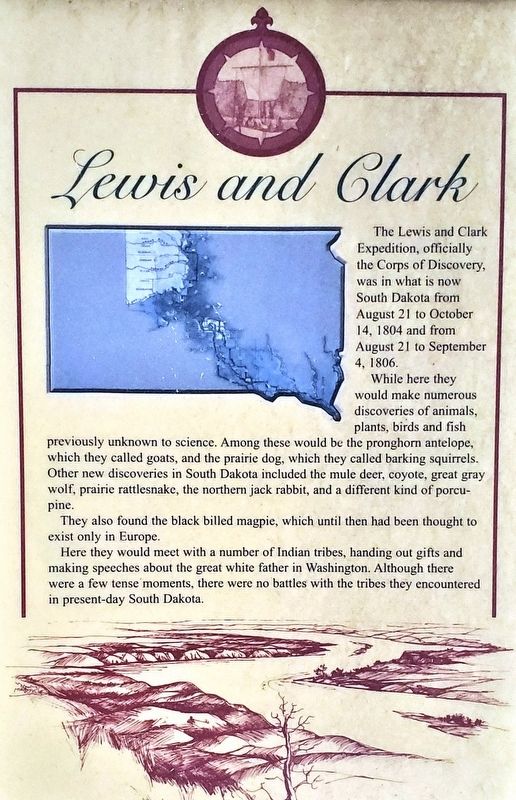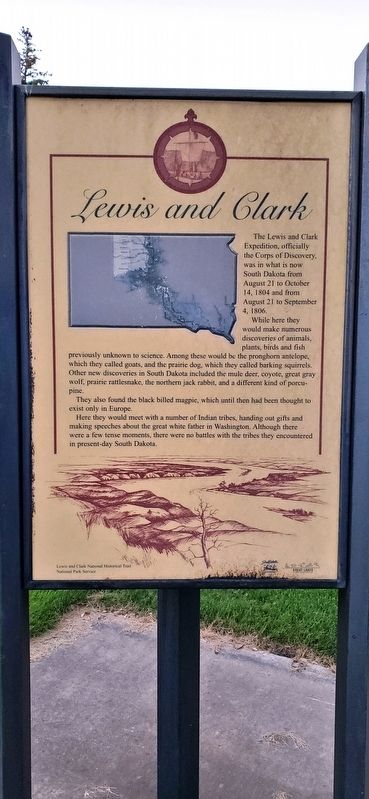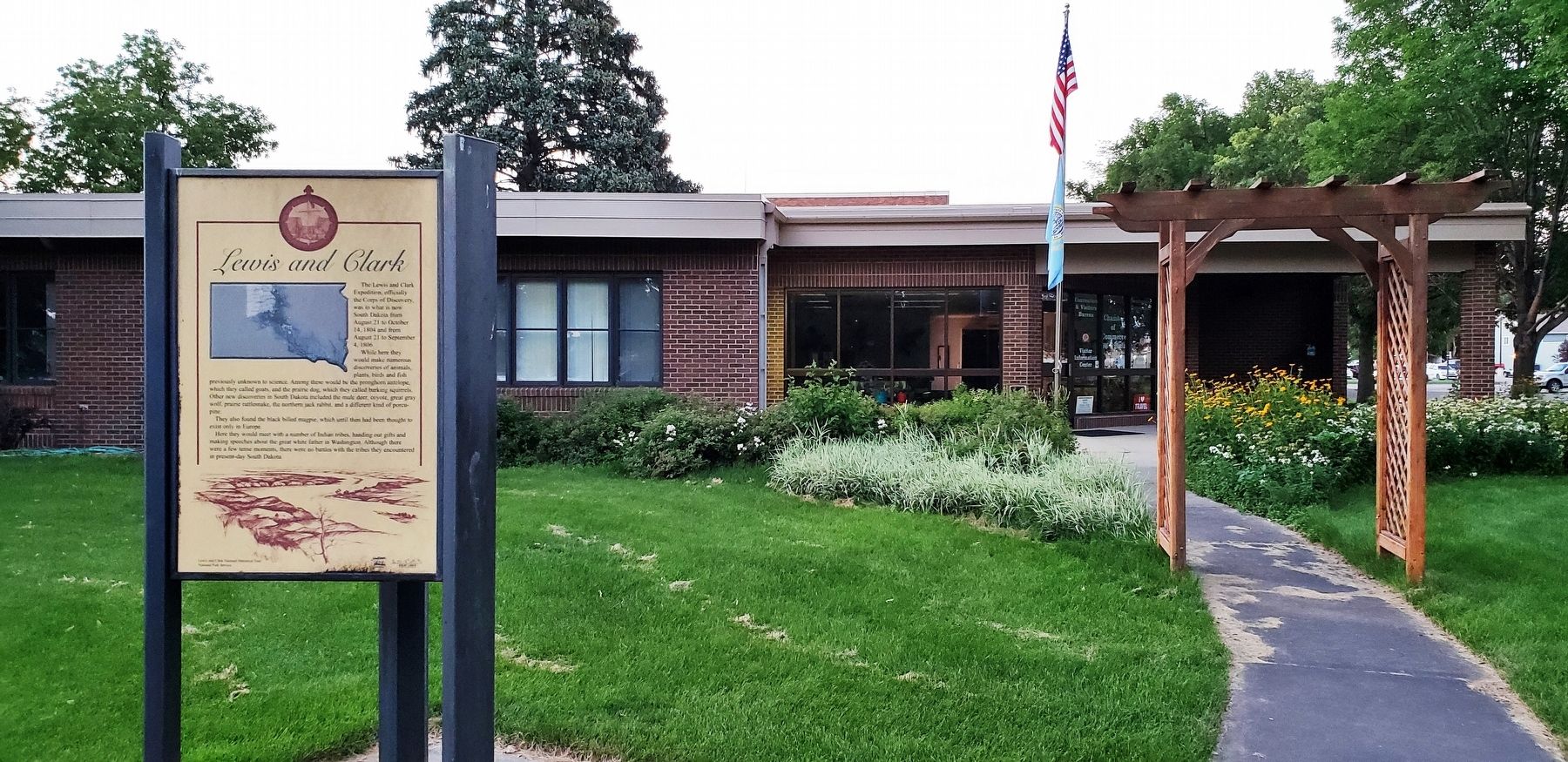Pierre in Hughes County, South Dakota — The American Midwest (Upper Plains)
Lewis and Clark
While here they would make numerous discoveries of animals, plants, birds and fish previously unknown to science. Among these would be the pronghorn antelope, which they called goats, and the prairie dog, which they called barking squirrels. Other new discoveries in South Dakota included the mule deer, coyote, great gray wolf, prairie rattlesnake, the northern jack rabbit, and a different kind of porcupine.
They also found the black billed magpie, which until then had been thought to exist only in Europe.
Here they would meet with a number of Indian tribes, handing out gifts and making speeches about the great white father in Washington. Although there were a few tense moments, there were no battles with the tribes they encountered in present-day South Dakota.
Erected by Lewis and Clark National Historical Trail, National Park Service.
Topics and series. This historical marker is listed in these topic lists: Animals • Exploration • Native Americans. In addition, it is included in the Lewis & Clark Expedition series list. A significant historical year for this entry is 1804.
Location. 44° 22.278′ N, 100° 21.844′ W. Marker is in Pierre, South Dakota, in Hughes County. Marker is at the intersection of West Dakota Avenue and James Street, on the left when traveling south on West Dakota Avenue. Marker is located beside the sidewalk, directly in front of the Pierre Chamber of Commerce building. Touch for map. Marker is at or near this postal address: 800 West Dakota Avenue, Pierre SD 57501, United States of America. Touch for directions.
Other nearby markers. At least 8 other markers are within walking distance of this marker. Pierre (here, next to this marker); Pierre's First School (within shouting distance of this marker); Old Deadwood Trail (approx. 0.4 miles away); John C. Waldron (approx. 0.4 miles away); American Indians and the Fur Trade (approx. half a mile away); South Dakota Railroads (approx. half a mile away); John Sutherland and the Capital Fights (approx. 0.6 miles away); Pierre Hill Historic District (approx. 0.6 miles away). Touch for a list and map of all markers in Pierre.
More about this marker. This is a tall, triangular, metal "kiosk-style" marker.
Related markers. Click here for a list of markers that are related to this marker. Lewis and Clark Meet the Teton Sioux Indians
Also see . . . The Native American Connection. Lewis and Clark's journey was successful, in part, because of help received from Native Americans. The expedition had its first meetings with the Yankton, Teton and Arikara while in present-day South Dakota. The explorers had their first council with a Sioux tribe, the Yankton, at Calumet Bluff on Aug. 30, 1804. Lewis and Clark's first meeting with the Teton got off to a shaky start. The two groups barely avoided a confrontation at the Bad River on Sept. 25, 1804. It was early October when the expedition stopped at an Arikara village. As the entourage approached, the villagers lined the shore to witness a curious sight. The captains realized the Arikara were fascinated by York, Clark’s servant and the expedition’s only black man. (Submitted on September 28, 2018, by Cosmos Mariner of Cape Canaveral, Florida.)
Credits. This page was last revised on October 16, 2018. It was originally submitted on September 27, 2018, by Cosmos Mariner of Cape Canaveral, Florida. This page has been viewed 206 times since then and 18 times this year. Last updated on October 14, 2018, by Cosmos Mariner of Cape Canaveral, Florida. Photos: 1, 2, 3. submitted on September 28, 2018, by Cosmos Mariner of Cape Canaveral, Florida. • Andrew Ruppenstein was the editor who published this page.


